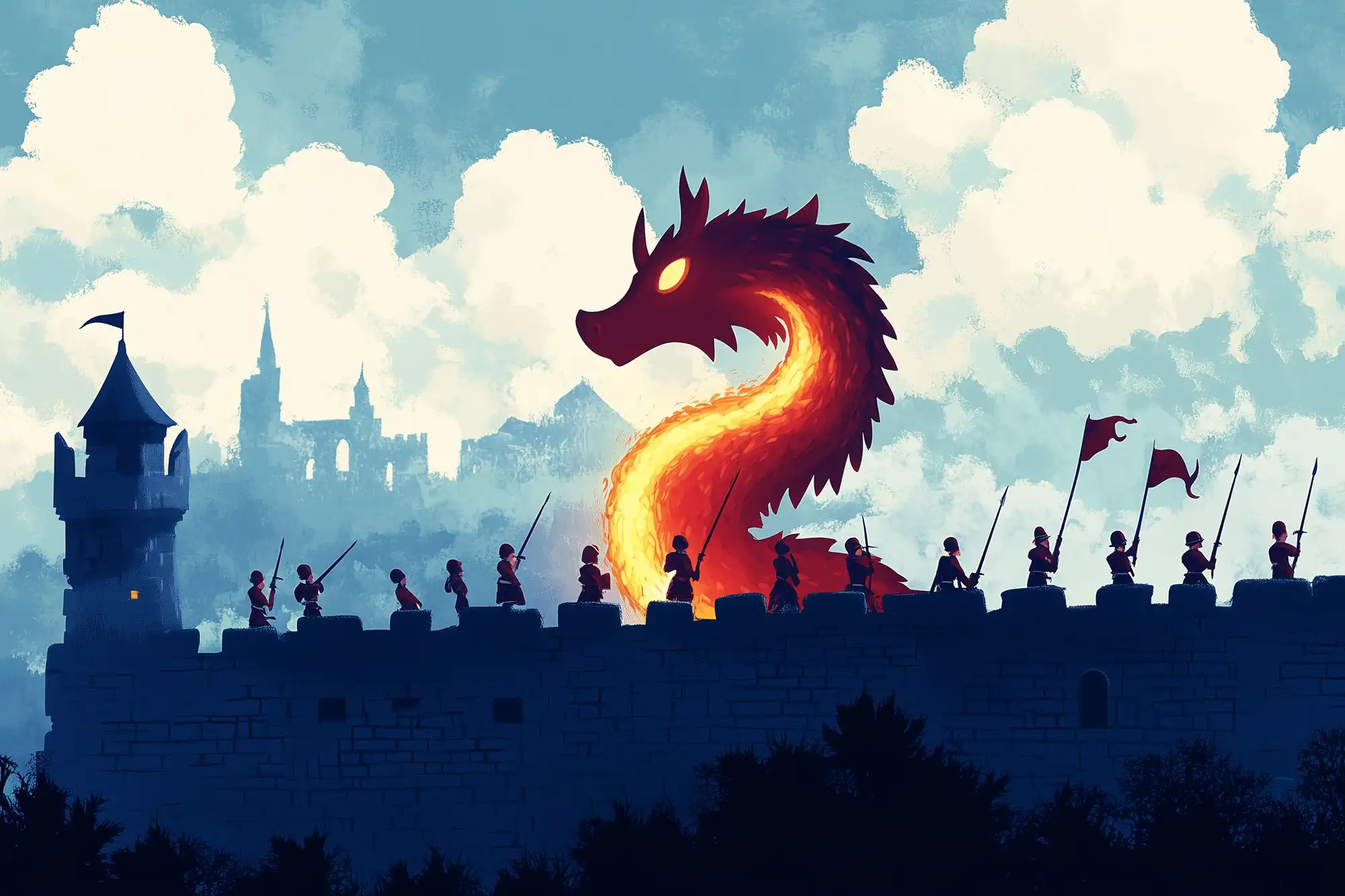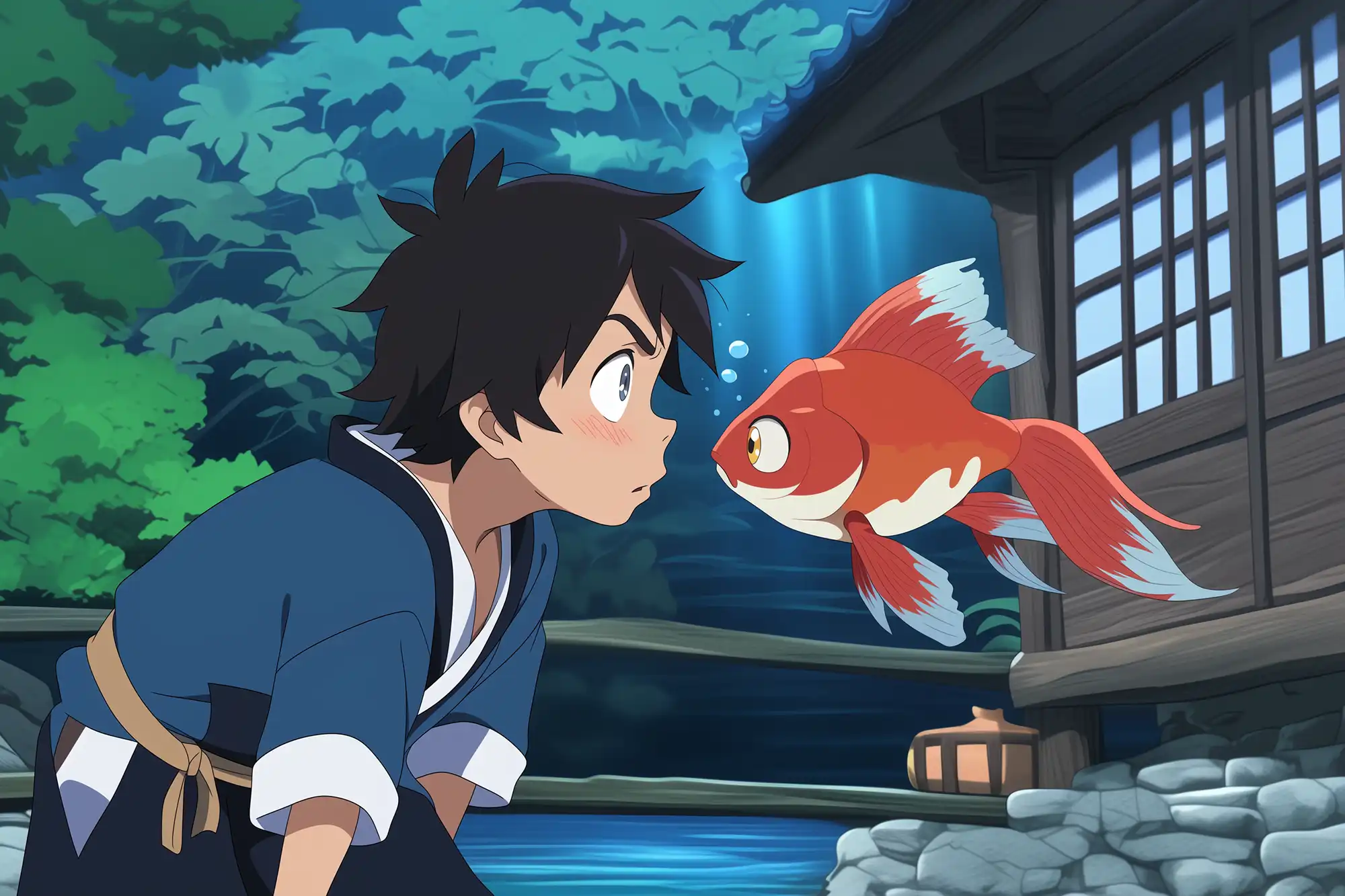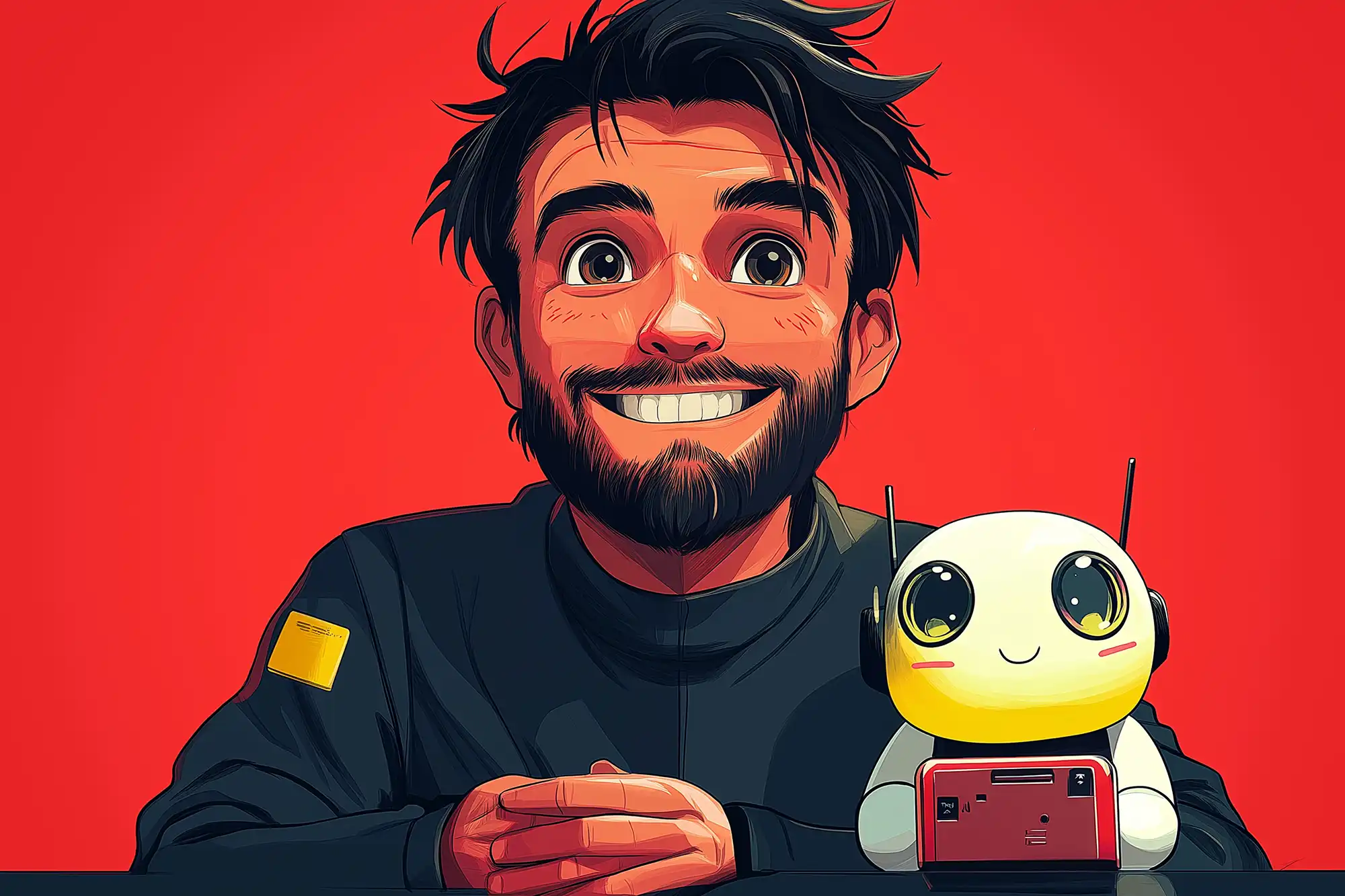The ‘Dragon and the City’ is a storytelling framework where a city, representing our everyday world, faces a threat—a dragon—that disrupts the status quo. The dragon, while terrifying, often sits upon a treasure, symbolizing the reward of overcoming the obstacles. This bold narrative structure mirrors the challenges and opportunities present in any impactful project.
Whether you’re leading a team through a restructuring process, pitching a new product to investors, or rallying your organization around a new initiative, this storytelling technique can highlight the stakes and inspire collective action. It achieves this by engaging people not just intellectually but emotionally. By framing your narrative around a noble quest, you tap into an innate human desire to overcome adversity and become part of a larger, compelling story.
Step 1: Define Your City
Defining your ‘City’ sets the stage for your epic adventure. Imagine that it comprises the core elements of your project or organization—those you cherish, value, and perhaps, wish to transform. Identify what makes your city lively: it could be a team with unmatched expertise, a creative culture, loyal customers, or advanced technology.
However, no city is flawless. Alongside its grandeur, some areas might dim its brilliance. Maybe, even with excellent performance, there’s a feeling of employee dissatisfaction due to outdated tools or limited career growth. Acknowledge these issues that might hinder progress or cause discontent. Perhaps your customer service, while helpful, doesn’t fully match changing client expectations, jeopardizing loyalty. These small gaps in your city wall might seem minor but, if ignored, could weaken your defenses.
Finally, every city has leaders who guide its future. Identifying these key stakeholders is essential. Picture the corporate hierarchy—executives, team leads, and influential clients—whose support is crucial for steering the project in the right direction. Understanding who holds power and influence helps you plan and gather support, ensuring your city stays strong when the dragon approaches.
By thoughtfully looking at these aspects, you not only define where your city stands but also lay the groundwork for an exciting story that turns everyday tasks into a thrilling journey. Prepare your defenses, as the dragon awaits!
Step 2: Identify Your Dragon
In the world of storytelling, the dragon isn’t just a scary creature with fiery breath; it’s the representative of challenge and change. In the context of your project, the dragon symbolizes both external threats and potential opportunities waiting to be explored.
The first step in identifying your dragon is to recognize where the threat is coming from. Is it a lurking competitor vying for your market share? Perhaps a significant shift in consumer behavior spurred by technological advancements? Pinpointing these threats is like spotting a dragon’s shadow circling the city; you need to know where it is and how it moves to effectively respond.

Once the dragon’s location is mapped, understanding how it has grown or escalated is vital. Has the threat been slowly creeping up due to negligence or a lack of innovation? Or has it rapidly appeared due to sudden market shifts or economic changes?
And finally, dragons are known to hoard treasure. Within every challenge lies the potential for unexpected opportunities. Uncovering these hidden opportunities requires a shift in perspective. What might seem like a destructive force could, in fact, be a chance to innovate or pivot.
Step 3: Decide a Course of Action
At point we arrive to a pivotal moment when we must decide whether to escape the looming threat, defend against it, or straight on attack the beast.
Consider Escape
When the status quo no longer serves its purpose or the threat is overwhelming, it may be time to look beyond the city boundaries. The key here is to envision different roads leading to success. What unexplored avenues could offer relief from the impending danger?
When leaving the old behind, it’s crucial to identify what essentials must be carried into the new chapter. These are the elements that define your project’s core strengths. Think of a retail company deciding to shift from physical stores to e-commerce. They would need to bring forward their brand identity, customer loyalty programs, and unique product offerings. Keep the essence that makes your project uniquely yours. What skills, values, and resources do you need in this new journey to ensure continuity and connection with your past?
But every escape has its price. The risks and rewards must be meticulously balanced. Consider the drastic transformation of a publishing house transitioning from print to digital. While they gain access to a broader audience and reduce printing costs, they must invest heavily in digital infrastructure and risk alienating traditional customers. Ask yourself: What are the immediate and long-term costs of this change? Will the shift move you towards a brighter future, or will it demand sacrifices too steep to bear? Calculating the implications of your escape can illuminate whether this path is both viable and worthwhile.
When contemplating escape, remember: the story evolves as much through the fear of the dragon as through the hope of a better, more secure tomorrow. So let the narrative guide you towards exploring new horizons. Embrace the possibility that the very act of escaping may be the most rewarding part of your project’s journey.
Plan Your Defense
If escaping is not in your plans, it’s time to consider a robust defense. But what exactly do we protect in our metaphorical city? In professional terms, this means identifying assets, values, and principles worth safeguarding amidst the challenges of time and competition.

First, take stock of your city’s intrinsic value. Consider the core aspects of your project or organization that are non-negotiable. These are the elements that define your identity and serve as the backbone of your operation. Is it your unique company culture, innovative product, or your team’s unparalleled expertise? For instance, in a scenario where a company faces a shifting market landscape, preserving a deeply ingrained culture of innovation might be critical. This is where employees feel empowered to ideate, creating a magnetic workplace that draws top talent and maintains high morale.
Once you’ve identified what is worth defending, the next step is to fortify these positions. For example, reinforcing company culture can be achieved through targeted training sessions, team-building activities, and open forums that foster a sense of belonging and shared goals. In the face of external competition, perhaps it’s investing in cutting-edge technology or data-driven insights that will keep you ahead.
Defending existing positions also has its costs. Like city walls, defenses can both protect and restrict. Too much focus on maintaining the status quo might stifle creativity and limit growth opportunities. Reflect on the proverbial walled city that becomes complacent. In a corporate context, this could manifest as resistance to change, where attachment to old ways hinders adaptation to new market demands. The key is ensuring that your defenses are adaptable — fostering innovation while still preserving core values.
As you stand on the battlements of your city’s walls, remember that the objective is not merely to withstand challenges but to emerge stronger. Your city, fortified and dynamic, should be ready not just to survive the challenges but to thrive.
Prepare to Attack
The moment of attack is when heroes rise and new opportunities for success are captured. Preparing to attack means having a strategic plan ready to conquer the challenges surrounding your project.
Every attack involves risks, just as every project faces uncertainties. As you prepare to move forward, evaluate the landscape. What are the chances of success? To answer this, reflect on past efforts, market trends, and competitor weaknesses. Think of the market as a chessboard, and plan your moves accordingly. For instance, a tech startup might launch an innovative feature that no competitor offers, but they must also consider user adoption lag and market readiness. Understand these dynamics to gauge your true odds in the battle ahead.
In any great adventure, rewards are balanced by potential sacrifices. Are the gains worth the risks? Consider what you stand to achieve: increased market share, brand recognition, or financial profit. Weigh these against what you might need to sacrifice, whether it’s a portion of your budget, potential brand missteps, or simply time. Imagine a marketing campaign that dares to be different—the reward might be a stronger brand presence, but it could come at the cost of alienating existing audiences who preferred the old ways. Calculate whether the long-term gains justify these sacrifices.
In crafting your strategy, remember that the spirit of an attack lies in its daring nature and its thoughtful execution. Are you ready to face your challenges directly and seize your project’s dragon by the horns? The rewards await those who dare to engage and meet their challenges with a robust plan of action.
Seeing it in practice
Imagine a tech startup proposing a new cybersecurity solution for businesses. The typical pitch might highlight the increasing threat of cyberattacks, the company’s innovative technology, and projected ROI. The pitch would likely conclude with a call to invest in security infrastructure to protect sensitive data.
Using the ‘Dragon and the City’ Framework
Envision your business as a prosperous city filled with valuable data assets—the essential jewels of your enterprise. These jewels represent the strength and integrity of your operations, respected by clients and feared by competitors.
The looming threat is cyberattacks, growing bolder and more sophisticated. These attacks are the dragons, eyeing your assets with avarice, challenging the sanctity of your city walls.
Rather than fleeing or destroying what you’ve built, your mission is to strengthen your defenses—creating a robust shield around the city, equipped with cutting-edge cybersecurity technology. This defense is like building strong walls that are layered, constantly adaptive, and flexible to support growth without compromising security.
The narrative shifts from a simple investment in technology to a story of valor and strategy. Defending the city isn’t just a necessity; it’s a significant act of preserving prosperity and trust. Each team member becomes a guardian of this vision, with collective morale boosted by a shared story of bravery and community.
The brilliance of this framework is the ability to bring any project to life, turning abstract concepts into vivid stories that capture the imagination. It transcends the dullness of business jargon, engaging both teams and stakeholders by tapping into human emotions and instincts—curiosity, fear, ambition, and triumph.
The Dragon and the City is one of 54 storytelling recipe cards inside the Storyteller Tactics card deck. As you prepare your next pitch or proposal, dare to wield this framework. Craft your city, identify your dragon, and choose your path—be it escape, defend, or attack. The next time you stand before an audience, witness the dynamic transformation and connectivity this narrative approach brings to your work.


